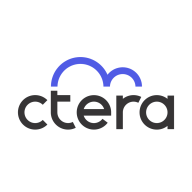


CTERA Enterprise File Services Platform and AWS Application Migration Service are competing in the digital infrastructure domain. CTERA holds the upper hand in user satisfaction, particularly in pricing and customer service, whereas AWS is praised for its overall functionality and comprehensive features.
Features: CTERA offers strong file synchronization, cloud integration, and data security. Its robust collaboration suite and scalability are noteworthy. AWS provides automation tools, seamless AWS ecosystem integration, and an extensive array of migration tools. CTERA is preferred for security features, while AWS is known for its wide feature set and integration.
Room for Improvement: CTERA can enhance its automation capabilities and AWS integration. Its platform may also benefit from more flexibility in deployment options. AWS could improve its initial cost structure and expand personalized support options. Additional in-depth training resources would strengthen its offering.
Ease of Deployment and Customer Service: AWS supports streamlined deployment and easy scalability within AWS environments, noted for responsive and knowledgeable service. CTERA offers straightforward deployment for on-premises and cloud solutions and excels in personalized customer support. AWS, however, has an edge with comprehensive support resources.
Pricing and ROI: CTERA is cited for competitive pricing and attractive ROI from lower upfront costs and reduced operational expenditures. AWS is seen as more expensive initially but offers long-term cost efficiency with extensive feature sets and migration effectiveness, providing better ROI for cloud resource-intensive organizations.



IBM Turbonomic offers automation, planning, and right-sizing recommendations to streamline resource management, improve efficiencies, and optimize costs across virtualized environments and cloud platforms.
IBM Turbonomic is valued for its capability to optimize resource allocation and monitor virtual environments efficiently. It facilitates automated decision-making in VM sizing, load balancing, and cost optimization for both on-premises and cloud deployments. Users can leverage insights for workload placement, ensure peak performance assurance, and effectively right-size across VMware and Azure. The ongoing transition to HTML5 aims to improve visual and navigational ease, while expanded reporting features are anticipated. Opportunities for improved training, documentation, and integrations enhance platform usability and functionality.
What Are the Key Features?In finance, IBM Turbonomic aids in maintaining platform efficiency during market fluctuations. Healthcare organizations leverage its capability for resource optimization during high-demand periods to enhance patient care support. Retailers use it for planning in peak seasons, ensuring resources align with fluctuating demand to maintain performance continuity.
AWS Application Migration Service minimizes time-intensive, error-prone manual processes by automating the conversion of your source servers to run natively on AWS. It also simplifies application modernization with built-in and custom optimization options.
The CTERA Enterprise File Services Platform provides a cloud-native global file system over public and private object storage, revolutionizing the world of hybrid cloud data solutions. Enhanced by a rich data services ecosystem, CTERA enables enterprises to gain full control of their data for optimal edge performance, data insight, and governance. The platform focuses on security, providing features like data encryption, access controls, and ransomware protection. Centralized management tools enable efficient data control and monitoring. The platform is being used to replace legacy NAS and file servers, especially at remote locations, and simplify backup and disaster recovery of file data while providing the flexibility of multi-cloud deployments with infinite scalability. CTERA is at the core of hybrid cloud transformations of some of the world’s largest banks, healthcare organizations, global media groups, and government agencies, in deployments that scale to tens of petabytes.
We monitor all Cloud Migration reviews to prevent fraudulent reviews and keep review quality high. We do not post reviews by company employees or direct competitors. We validate each review for authenticity via cross-reference with LinkedIn, and personal follow-up with the reviewer when necessary.